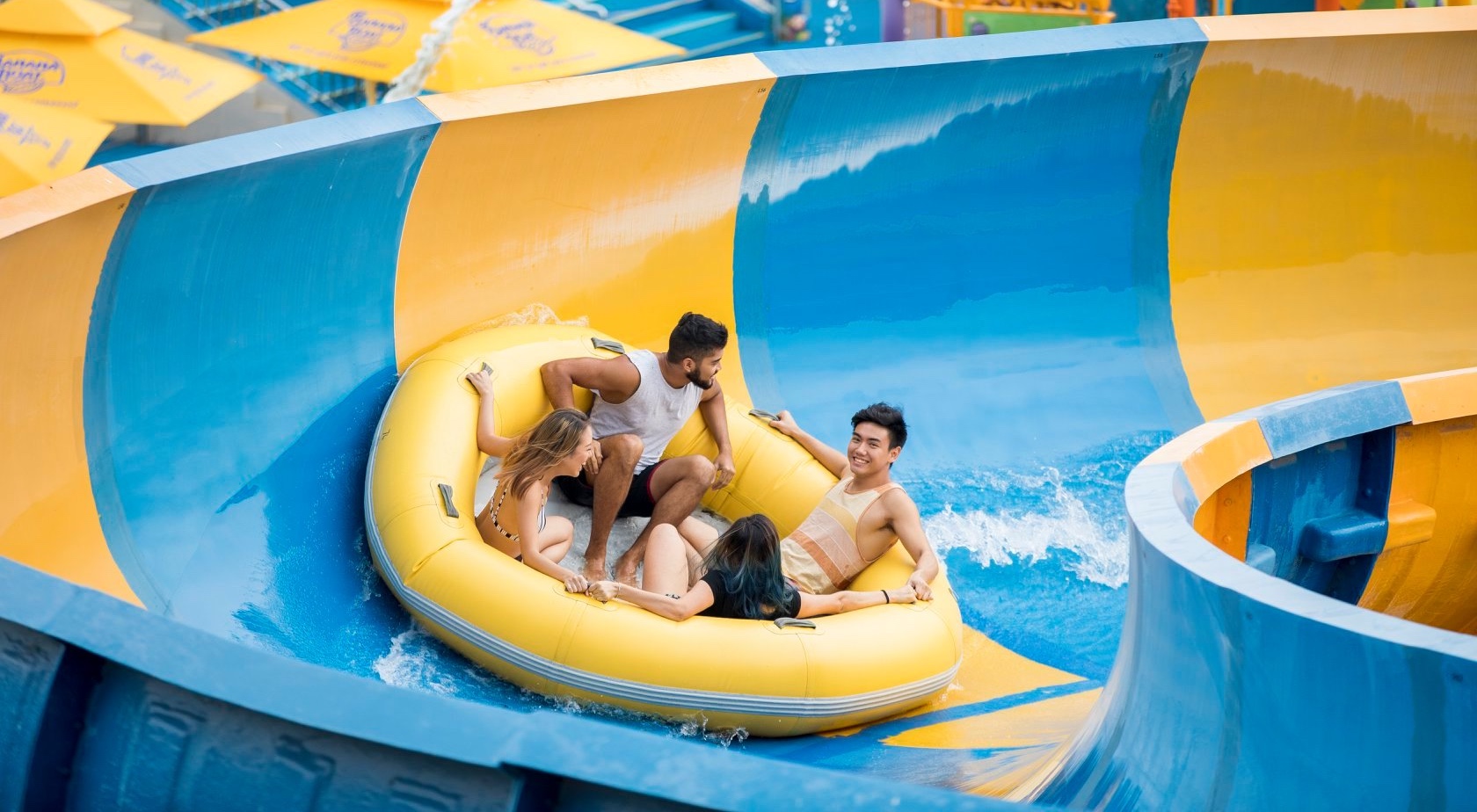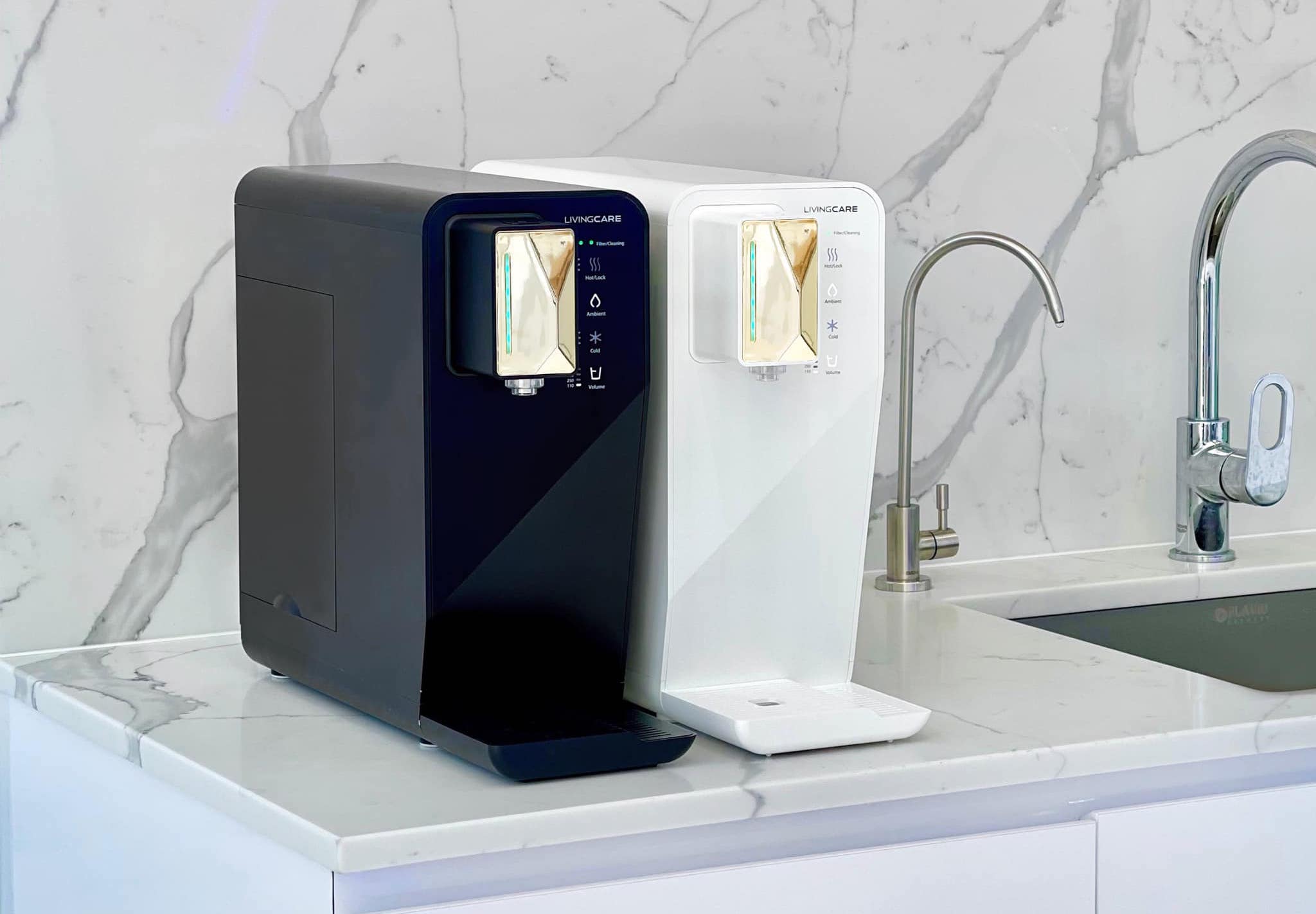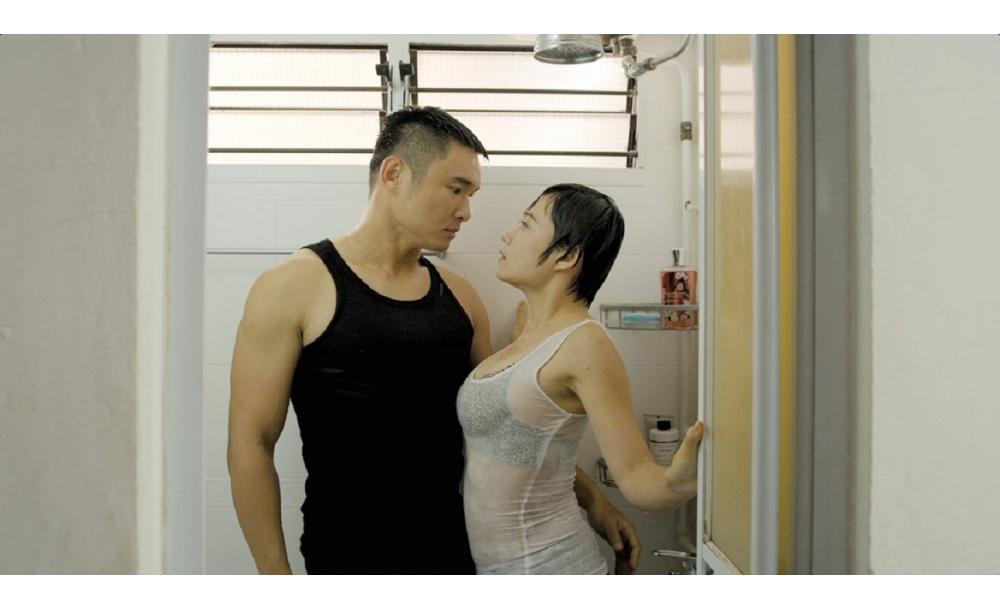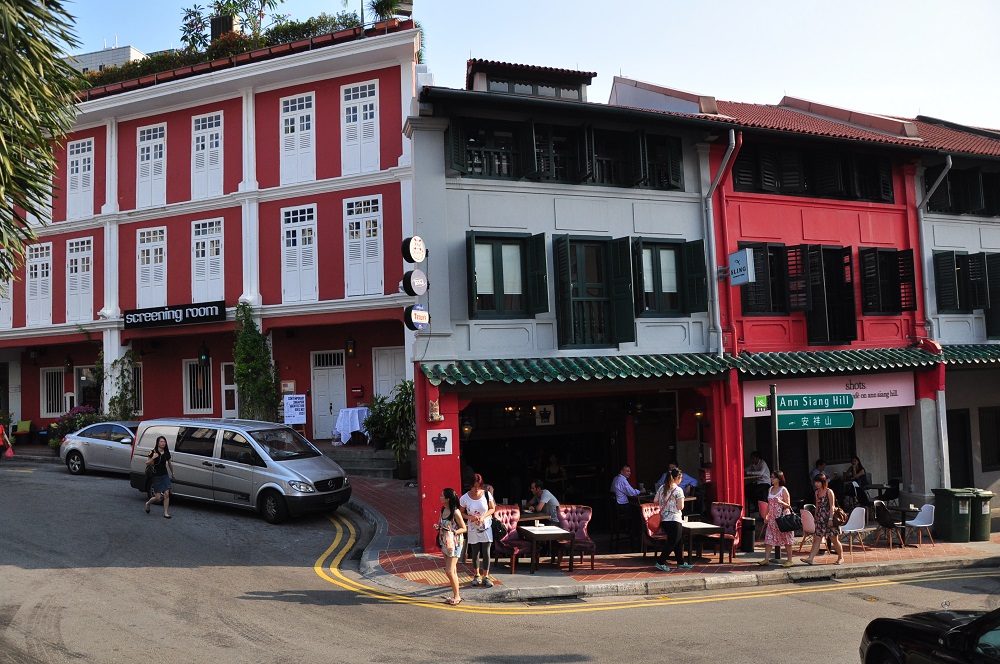Award-winning artist Kwan Yuen Tam has had two solo exhibitions at the Art Commune Gallery, and some of his work has appeared in Urban Sketches Singapore. He uses watercolors to depict urban jungle Singapore scenes, a contrast of medium and subject that yields interesting results. Here, he tells us about his creative process and what he looks out for in a scene.
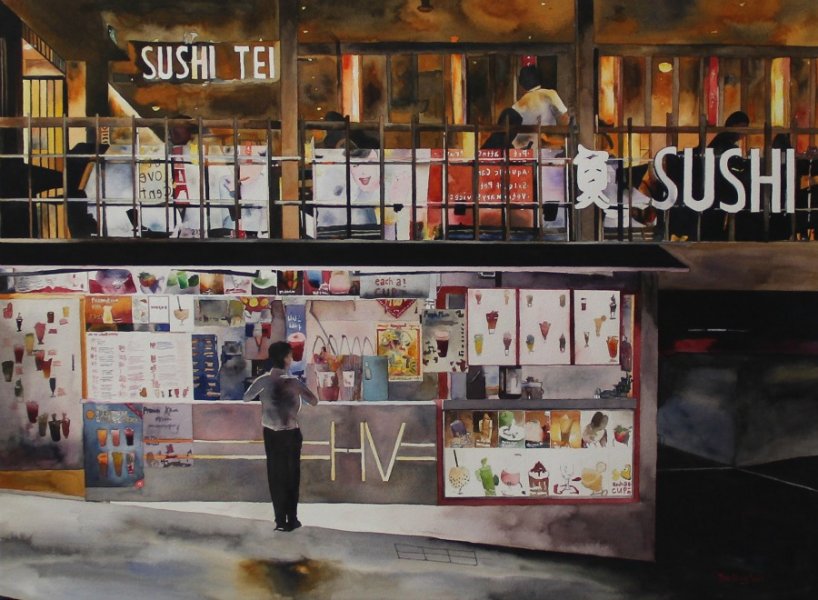 Sushi Tei Bubble Tea in Holland V
Sushi Tei Bubble Tea in Holland V
At what point did you decide to become a watercolor artist?
I decided to become a watercolor artist right after my graduation from Nanyang Technological University’s (NTU)’s School of Art, Design and Media. As the idea of working full-time in an office building put me off, I was thinking of ways to escape that. Painting allows me to work flexibly and be able to pursue my passion at the same time, so it was the perfect choice. My parents were worried that I wouldn’t have a stable income, so I worked part time while I painted and this included working as a tutor, a gallery assistant and taking on some teaching assignments. After my first solo exhibition and winning prizes from overseas competitions, it gradually stopped.
A lot of your work focuses on cityscapes.
I fill in a lot of detail when I paint, and this enables me to captures urban landscapes with many objects, like buildings, street lamps, cars, humans et cetera. All of these elements intertwine to form a complex, interesting and rich composition that draw the viewer in, especially at night. Singapore’s cityscape provides me with many opportunities to explore this interplay of lights, buildings, streets, cars and humans—this attracts my viewers when they take in the busy, cosmopolitan atmosphere of my paintings. Singapore is a busy city and provides me with a lot of material for my work.
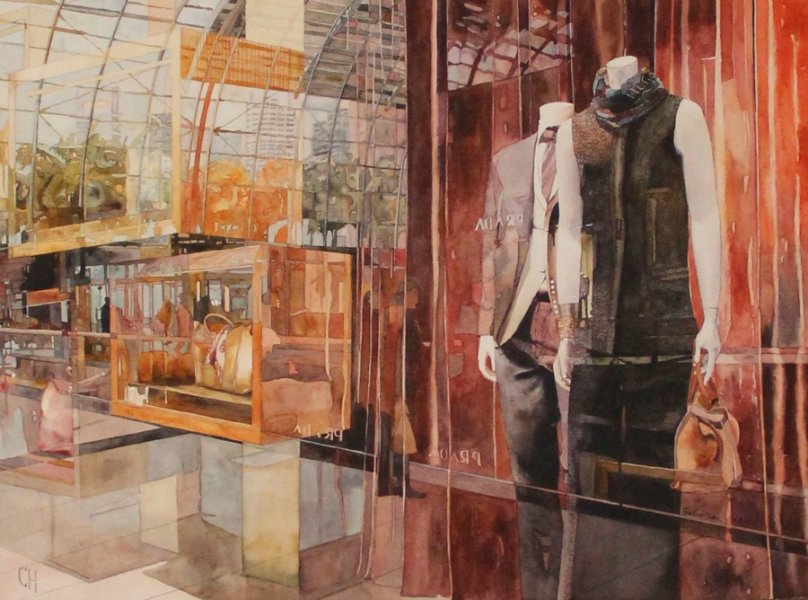 Inside Out
Inside Out
Why choose watercolors for your work?
I have developed a strong foundation for painting in water-based mediums as I studied Chinese calligraphy and painting for 6 years during my school days. After joining the three-month watercolour course in university, I fell in love with the medium, did well in it, and felt that I could go far pursuing this. It was in university when I started exploring and perfecting my style.
It can be difficult to control the medium. What were some of the difficulties you have faced?
Drawing straight lines with the brush is not easy as the brush needs to have just the right amount of “wetness.” I did not find much difficulty in controlling the water as I was educated in a similar medium. However, figuring out the composition was challenging. For example, the usage of colors, space, and thinking about which elements to add, subtract and alter so that the painting stays together. These are the greatest difficulties an artist will face.
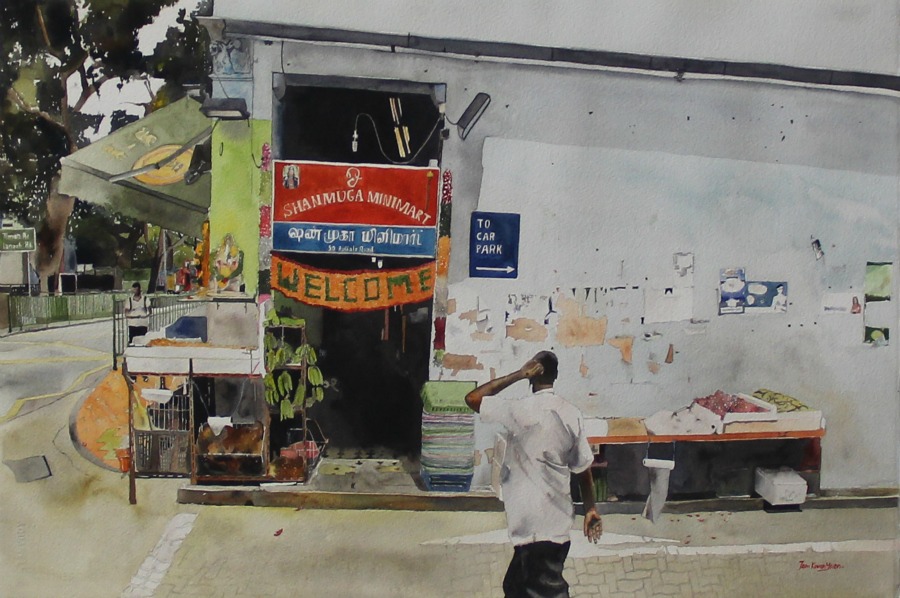 Lost
Lost
What was the most fun place in Singapore to paint?
I love painting the CBD at night but this is done at home. For outdoor painting, Little India and Tiong Bahru are great places to paint. I don’t have any favorite spots, as long as they provide shade and interesting architecture. Street scenes will do as well.
What is your creative process like?
I usually start with an idea of where I want to go. I will bring along my sketch book and my DSLR camera. Then, I find a spot to make a couple of sketches of the place followed by a few shots of the scene from different angles. By then, I would have a good idea of which sketch/photograph, or a combination of photographs to use as references for my actual painting. Once I reach home, I will have plenty of material to draw from, including my own memory and ambience of the place, which will be incorporated into my work. The design process is continuous as I draw and paint, making changes to the original photo that I have, with the goal of creating the strongest composition. Colors will be altered to make the work richer. The resulting image is my own interpretation of the subject matter.
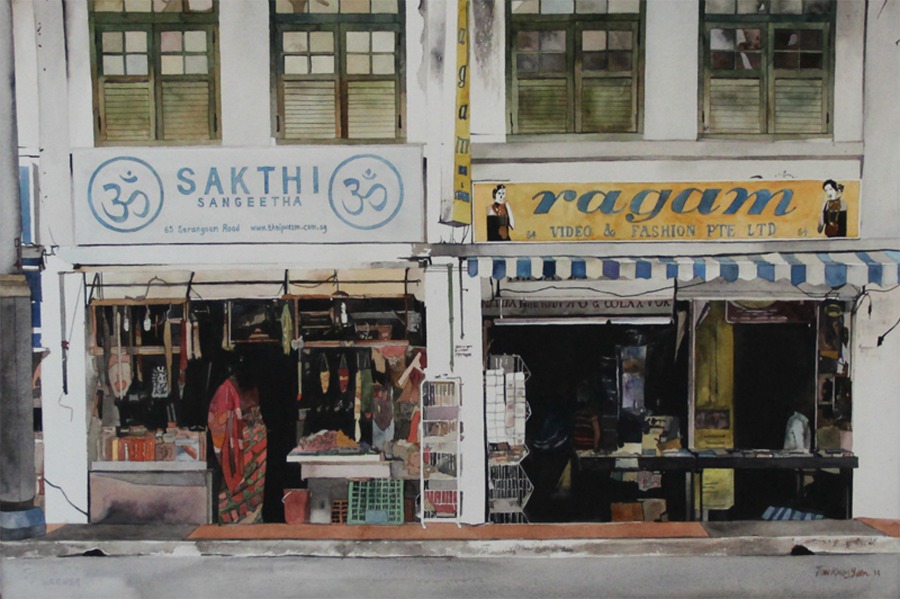 A Tale of Two Shops
A Tale of Two Shops
Which is the painting you are most proud of?
I don’t have one that I am most proud of but I felt that I made several artistic breakthroughs with some of them. I enjoy the night scenes that I created, particularly “Dazzle Me, Singapore” and “Lights of Wellington Street,” which was done in Hong Kong. I also feel that I achieved something with my painting of Times Square, titled, “Good Morning, NYC!.” This is because of what I did with colors and space; I was influenced by the Russian master Ilya Repin and Picasso. It was the most intense, difficult and complex piece for me, and is also the most successful.
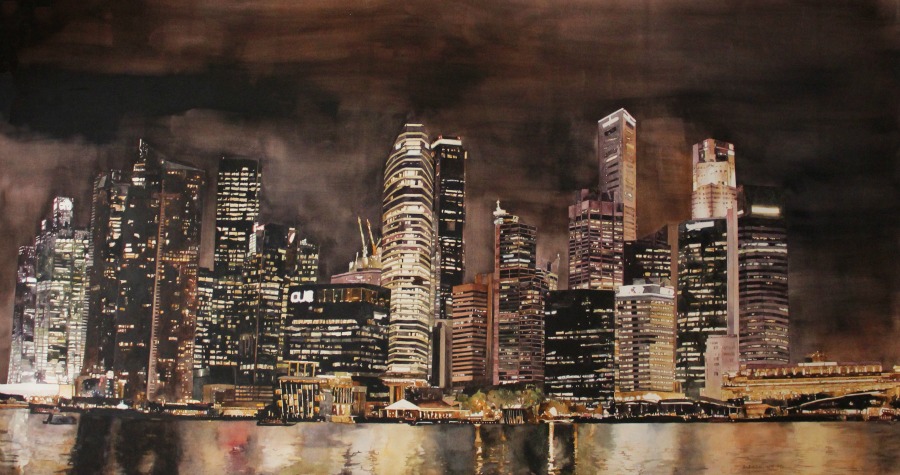 Dazzle Me Singapore
Dazzle Me Singapore
What happens if you make a mistake in your painting? What do you do?
The mistake can be washed off with water and dried using a clean brush. Minor mistakes like crooked lines can be redrawn this way. Mistakes can also transform into something else so it does not look like one. For example, if I accidentally drip my paint onto bits where I painted the sky, I can change these droplets to make them look like birds. In any case, the finished product will not look anything had gone wrong.
You can follow Kwan Yuen Tam on Facebook.


